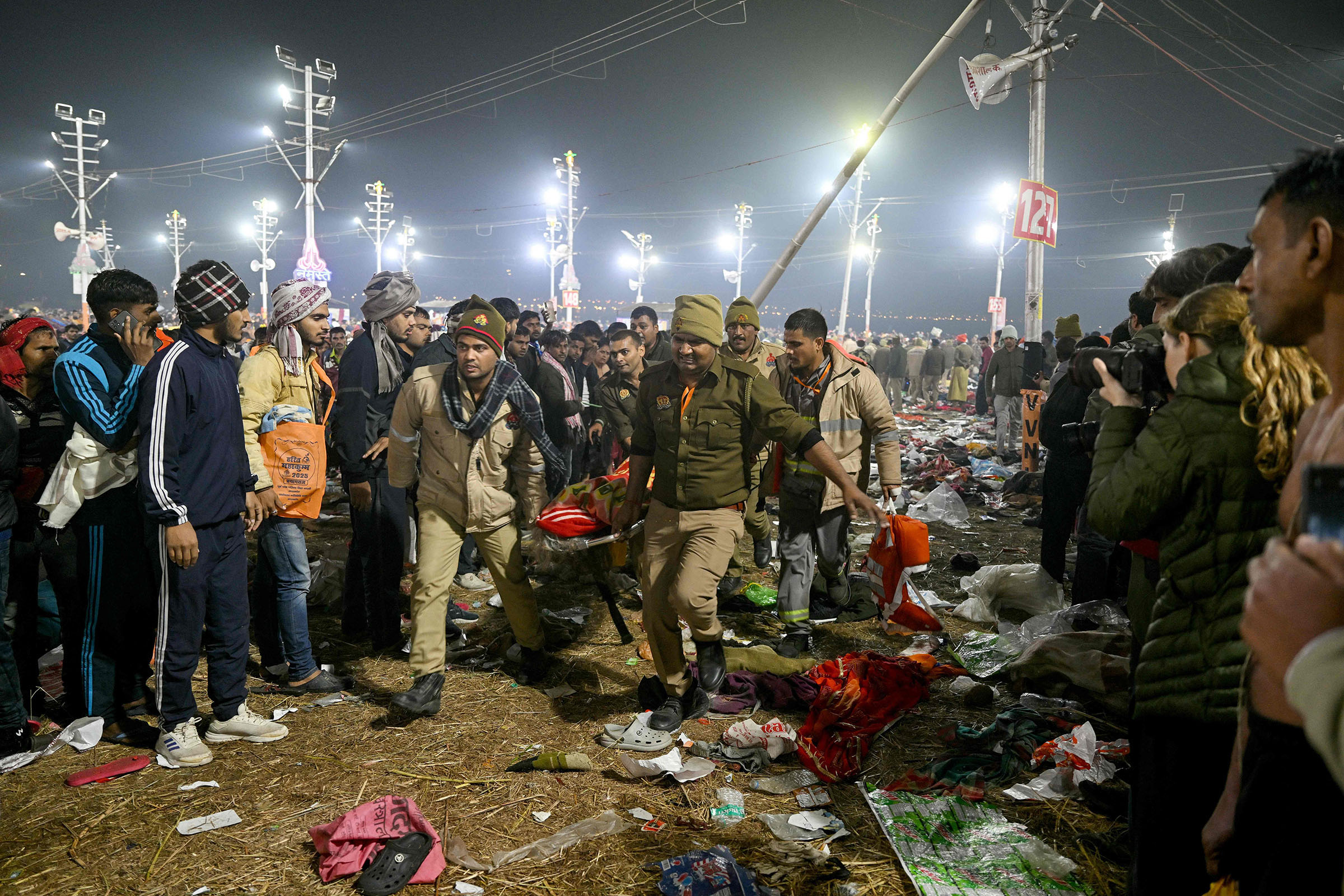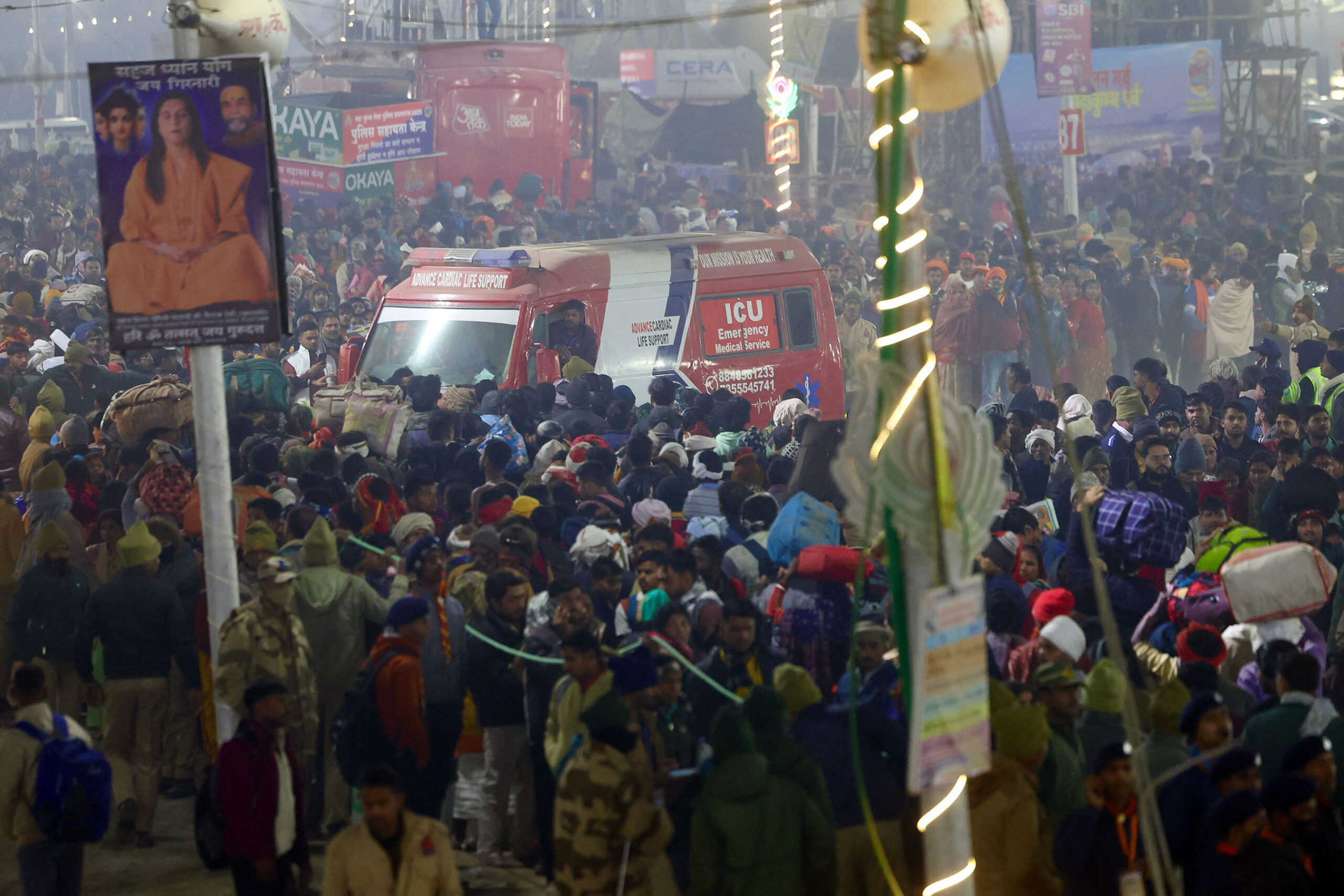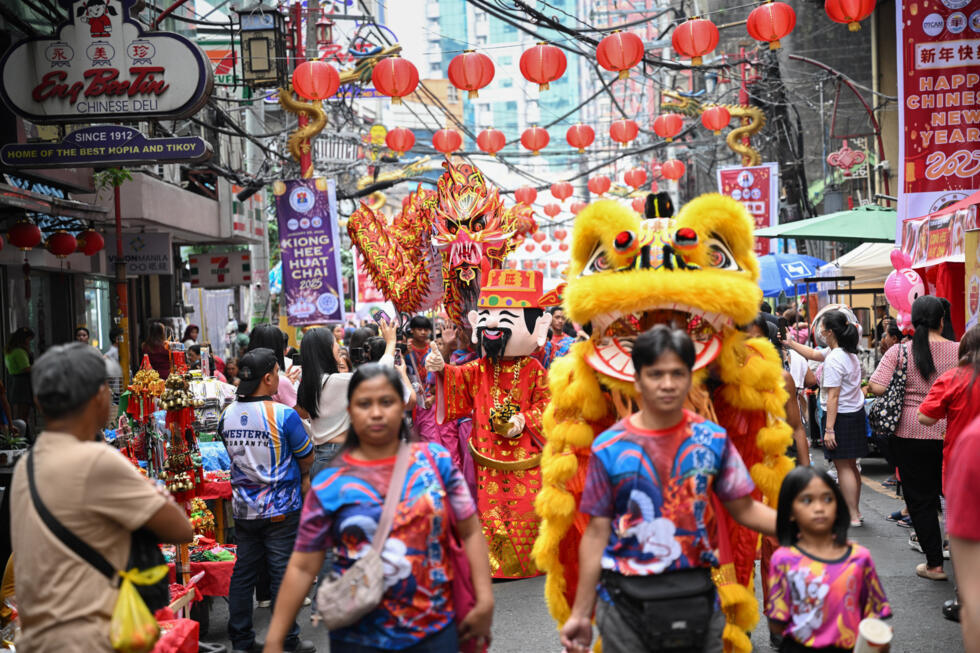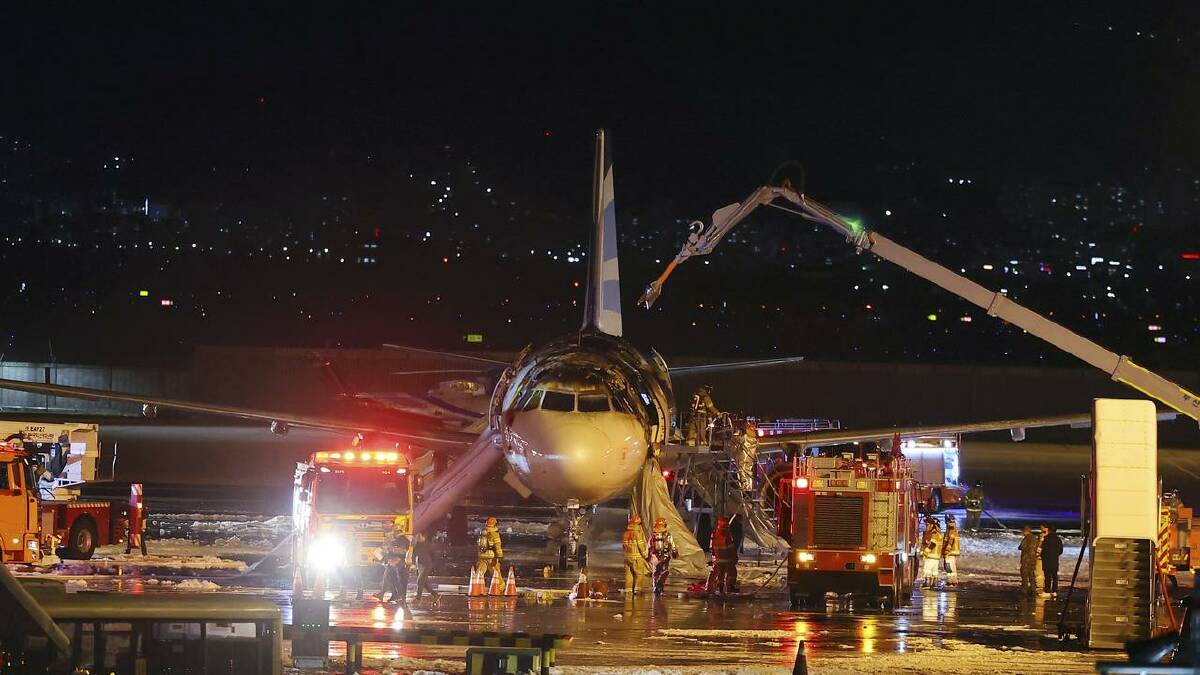Odisha train accident: How did three trains collide in Odisha?
The cause of the crash, which is being described as India's worst this century, is not yet clear.
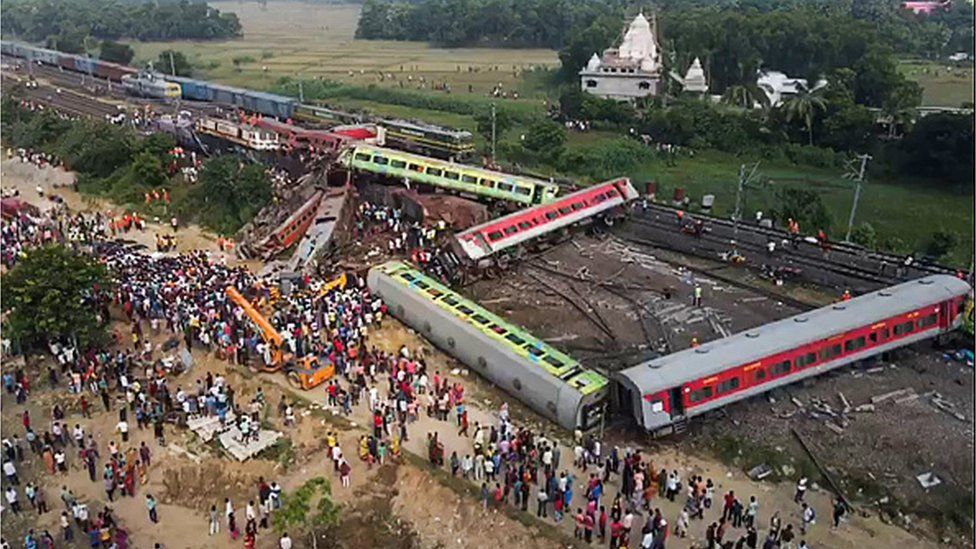
KATHMANDU: A devastating crash involving three trains in the eastern Indian state of Odisha has killed 288 people and left hundreds injured, many of them seriously.
The cause of the crash, which is being described as India’s worst this century, is not yet clear.
Railway Minister Ashwini Vaishnaw, who has been at the site of the accident, has said “a high-level committee” will be set up to investigate the accident.
Mr Vaishnaw’s cabinet colleague Dharmendra Pradhan blamed “technical reasons” for the crash, describing it as “an unfortunate incident” that “shouldn’t have happened”.
An official said the inquiry would be headed by the commissioner of railway safety for the south-eastern circle – which includes Balasore district where the accident occurred.
Full details of how it happened are still not available, but the railway ministry said the crash took place around 18:55 (13:25 GMT) on Friday near the Bahanaga Bazar station, about 270km (170 miles) south of Kolkata.
The accident involved three trains:
- Coromandel Express, which had started just hours before from Shalimar railway station in the state of West Bengal and was headed to the southern city of Chennai
- Howrah Superfast Express, which had started from Yesvantpur station in Bengaluru and was due to reach Howrah
- A stationary goods train, which was standing at the Bahanaga Bazar station
There are varying accounts of which train derailed first and how the collision happened. But railway spokesperson Amitabh Sharma said it was the Coromandel Express that derailed first.
A railway ministry official told the BBC that the Bahanaga Bazar station had four tracks.
“Lines 1 and 4 had goods trains parked on them. The passenger trains were running parallelly and simultaneously on track two and three. It’s a matter of investigation why and how the Coromandel Express got derailed and hit the goods trains,” he said.
He added that coaches from the derailed train fell onto the two rear coaches of the Howrah Superfast and derailed it too.
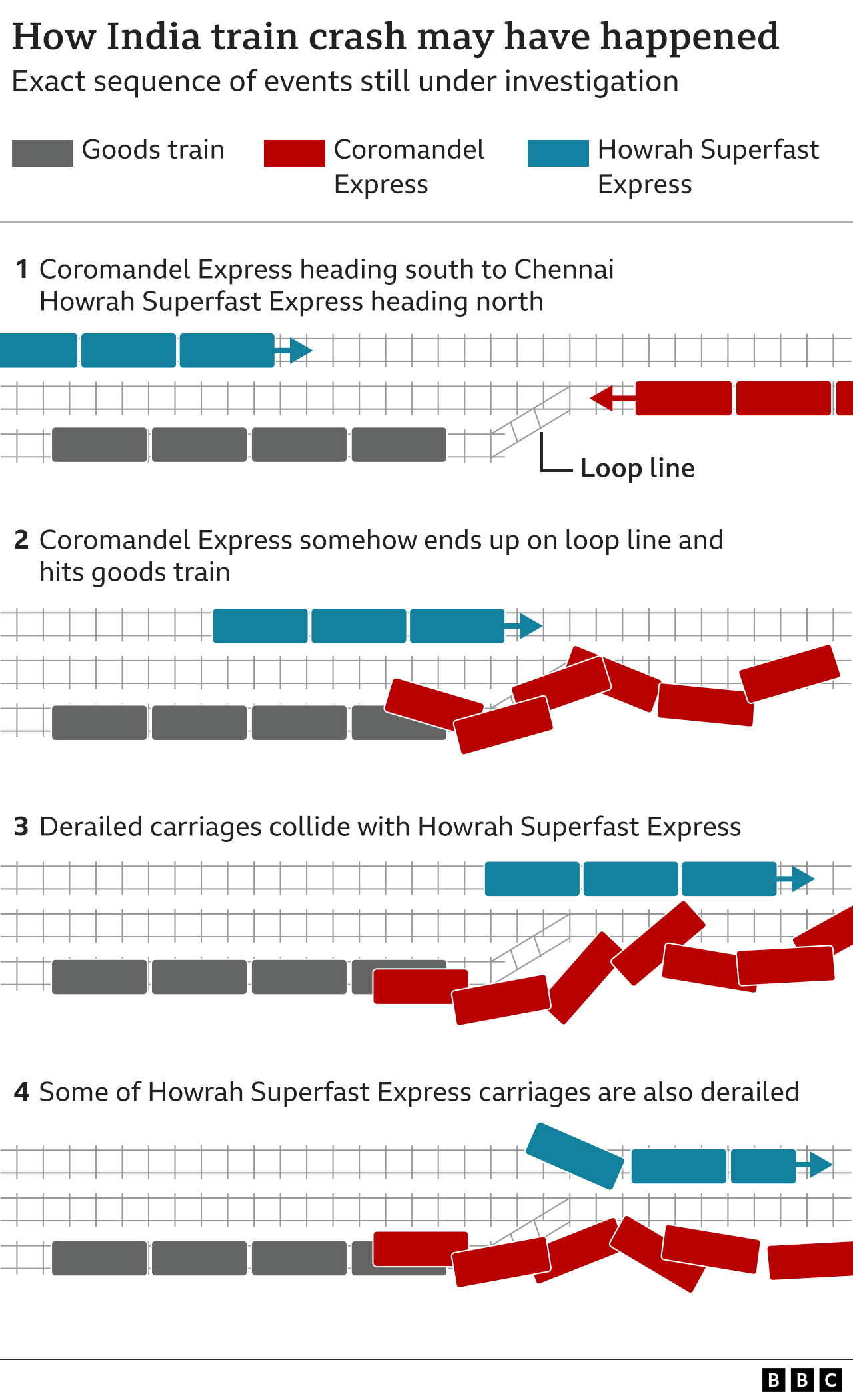
An Odisha government press release said that, in total, 17 coaches of the two passenger trains were derailed and severely damaged.
Villagers from the nearby area and eyewitnesses to the crash also spoke of three trains being involved in the crash.
Girija Shankar Rath, who lives near the station and was among the first people to reach the accident site, told BBC Hindi that the Coromandel Express derailed and hit the goods train parked on a nearby track from behind.
“There was total chaos and the whole area was engulfed in smoke. And then we saw Shalimar Express which came hurtling down and hit some of the Coromandel wreckage and two of its coaches also derailed,” he said.
Another eyewitness, Tutu Biswas, said he came to the site when he heard a loud noise.
“Some of the coaches of the Coromandel Express had gone over the goods train,” Mr Biswas said. “There were lots of injured people and bodies here. I met a young boy who had lost both his parents. He was crying and then he died too,” he added.
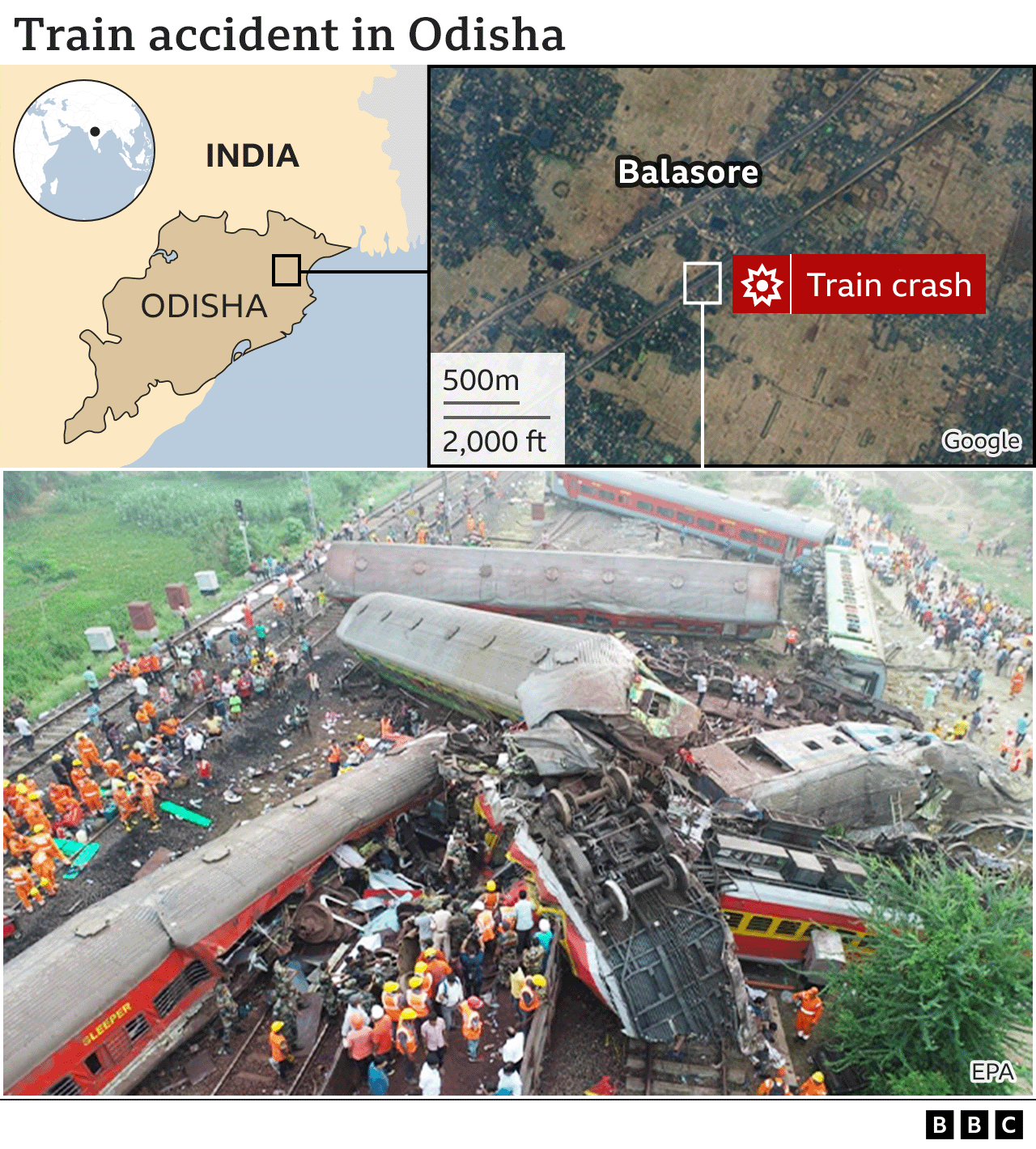
Friday’s crash is among the five deadliest accidents in the history of India’s railways.
Atul Karwal, chief of the National Disaster Response Force (NDRF), said the force of the collision had left several coaches crushed and rescuers had to cut through the wreckage to reach the passengers.
Hundreds of ambulances, doctors, nurses and rescue personnel were sent to the scene and worked for 18 hours to rescue passengers and pull out bodies.
India has one of the largest train networks in the world. It runs more than 12,000 passenger trains daily, which are used by tens of millions of passengers to travel across the country – but a lot of the railway infrastructure needs improving.



